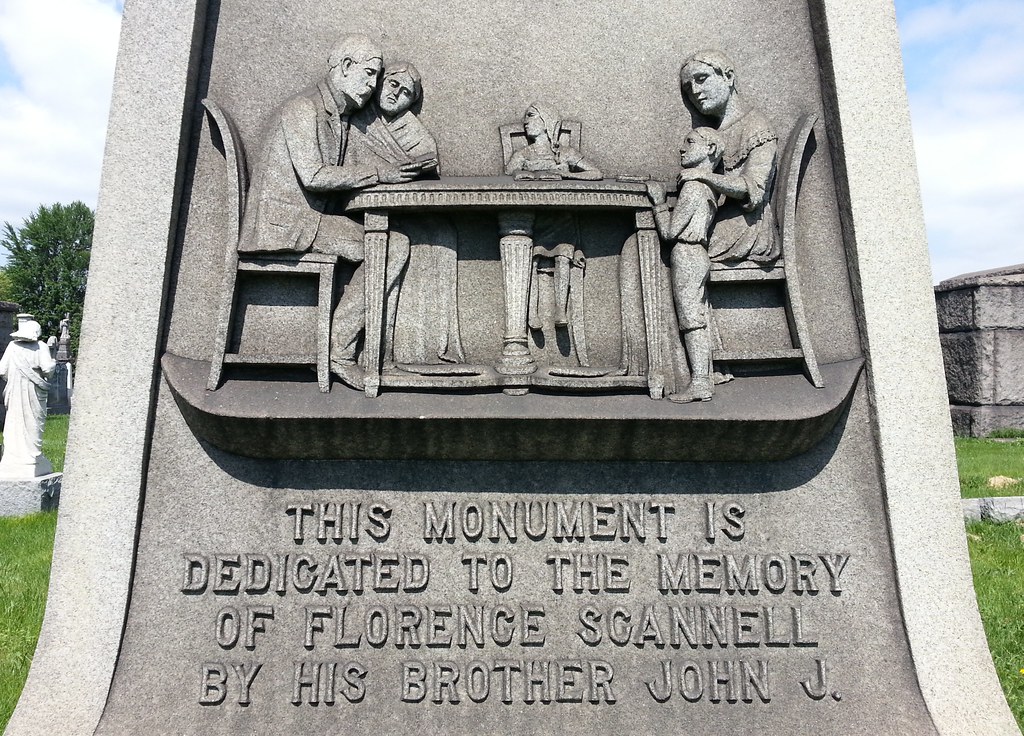
Florence and John Scannell were a couple of thuggish Tammany Hall organizers working in the dirty world of 19th-century New York City politics. Florence was running for alderman in 1869 when he was shot during a barroom brawl. He won the election but died from his wound several months later. John vowed vengeance on Thomas Donohue (or Donoghue), the man he believed to have pulled the trigger.
After a few failed attempts, John succeeded in killing Donohue in 1872 with a gunshot to the face. (He had shot him in the chest on a previous occasion, to no avail.) He was then arrested and held in the Tombs, where he reconnected with an old friend who was also being charged with murder: Richard Croker, the future head of Tammany Hall. John was acquitted by reason of insanity and committed to a lunatic asylum, where he was held for a mere few months before being released. The NY Times had more or less predicted this outcome in a sarcasm-laced editorial published shortly after John's arrest:
When he is tried, a number of doctors will be brought up to swear that Donoghue died of the measles, complicated with the horse disease, and then other doctors will swear that Scannell is and always was insane, and then two or three women will be brought into Court and testify that in all the relations of life Scannell is a pink of propriety . . . and two years hence Scannell will be run by Tammany for Mayor. Let the poor man go at once. Why subject him even to the temporary inconvenience of a trial!He never ran for mayor, but he did indeed begin a political ascent after his release, rising to a powerful leadership position within Tammany Hall, thanks in no small part to his friendship with Croker that had been strengthened by their time together in the clink. (They were sometimes referred to by their associates as "The Big Two".) John then served as fire commissioner ("a lucrative patronage position") for a couple of years in the mid-1890s and was later appointed the first fire commissioner of Greater New York, the expanded five-borough city that was created in 1898. It only took him a few years in that post to be indicted for conspiring to defraud the city in the purchasing of supplies for the department.
Serving as a lovely grace note, the final paragraph of John's 1918 NY Times obituary reports that he was sued for $15,000 in 1907, at the age of 67, by the daughter of one of his housekeepers for "kissing her three times without consent".
John erected the pictured monument at his brother's gravesite (and his own future gravesite) in 1914, some 45 years after Florence was shot. There's a life-size statue of Florence standing atop the monument, but the scene you see above, despite the dedication to Florence right beneath it, actually depicts John and his family. There's a second, more curious image carved on another side: labeled simply "The Abbott", it shows a horse standing beside a creek.
It turns out that The Abbott (or Abbot) was a renowned racing horse and one of John's most prized and beloved possessions, for which he had paid a record-breaking price shortly after the horse set the world record for the fastest mile in 1900. The Abbott is not, as far as I can tell, buried here at Calvary, but John apparently felt he deserved a place on the family monument nonetheless.


